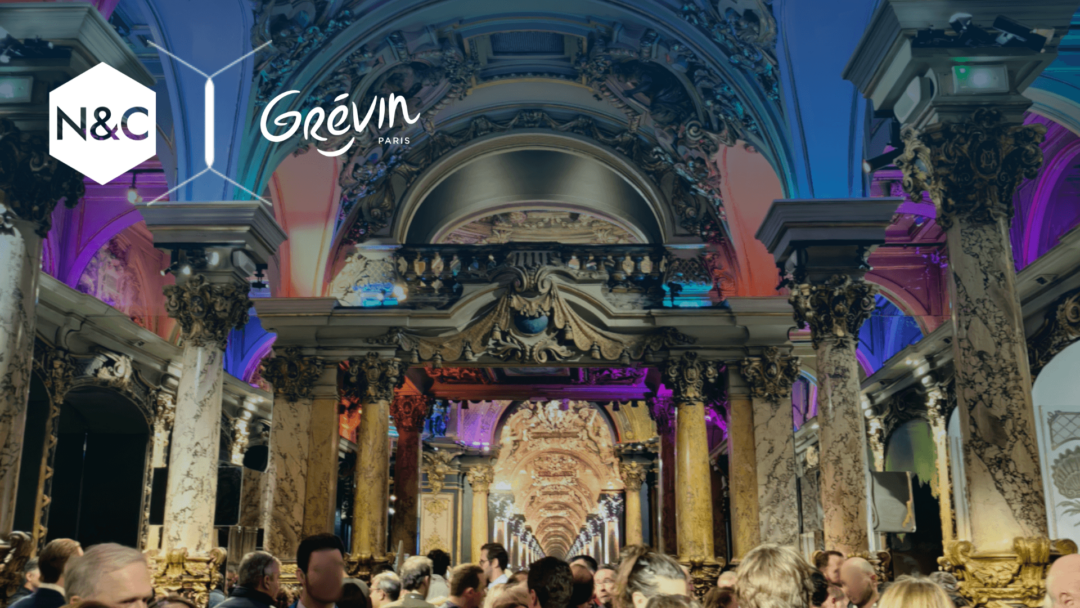For over 140 years, the Musée Grévin has captivated visitors by blending art, heritage, and popular culture. But how does such an iconic establishment manage to evolve in the face of modern challenges? Yves Delhommeau, general director since 2016, reveals the behind-the-scenes workings of this legendary institution. In this exclusive interview, he shares his journey, the museum’s mission, and the growing importance of Revenue Management in meeting the expectations of an ever-evolving audience. Discover how the Musée Grévin combines tradition and innovation to continue shining in the heart of Paris.
Can you please introduce yourself and tell us about your role at the Musée Grévin?
My name is Yves Delhommeau, and I’ve been General Manager of the Musée Grévin since 2016. I studied hotel management before going on to study geography and economics at the Sorbonne. After graduating, I began my career in the restaurant business, which led me to work on various projects related to theme parks. In particular, I was involved in setting up a catering offer at the France Miniature park, which I later took over to manage. This experience marked my first step into the world of theme parks.
Later, I helped create the leisure branch of Compagnie des Alpes, notably by bringing together parc Astérix and the Musée Grévin – which also included France Miniature at the time. This adventure enabled me to accompany the development of this branch, marked by the integration of emblematic sites such as Futuroscope and Walibi.
Can you tell us a little about the history and mission of the Musée Grévin?
The Musée Grévin opened its doors in 1882, over 140 years ago. Its original mission was initiated by Arthur Meyer, director of the newspaper Le Gaulois, now known as Le Figaro. At the time, few newspapers had the financial resources to illustrate their articles with photos. Mr. Meyer came up with the idea of creating a place where readers could discover representations of the celebrities featured in his newspaper.
To make this project a reality, he called on the services of the artist Alfred Grévin whose talent contributed greatly to the museum’s success – so successfully, that the museum kept his name!
Now, in 2025, what is the museum's mission?
Today, while remaining true to the museum’s DNA, we strive to adapt to changes in society. For example, after the First World War, we integrated themes such as the History of France and crime stories, which were particularly popular at the time. After the Second World War, with the democratization of photography, the museum became a place where visitors could immortalize their visit by photographing themselves alongside celebrities. A trend that has continued to grow ever since.
In 2025, our mission is to satisfy all museum visitors by offering them an immersive experience.
What do you see as the main challenges facing the museum sector today?
The Musée Grévin was one of the first to introduce dynamic pricing on dated tickets. This approach enables us to manage attendance, particularly during school vacations when we are often fully booked.
Today, our main challenge is to refine this strategy by optimizing our rates, not only on our website, but also on the platforms of our many reseller partners. Revenue Management plays a key role in this process, by ensuring that our prices are consistent, which is essential if we are to keep our visitors satisfied.
What issues and objectives led you to contact N&C? What were your expectations?
Revenue Management becomes part of our strategy as soon as we draw up our annual budget. We use data from previous years to forecast visitor numbers and set sales targets. This method helps us to adjust our prices according to visitor types and periods, while identifying areas for improvement to optimize our results.
Although we manage Revenue Management in-house, we felt we needed support to structure our skills. Recruiting a full-time dedicated person was not an option. We chose N&C for their clear, multi-sector vision of Revenue Management.
How did the diagnostic phase go? What were the main lessons you drew from it?
The diagnostic phase was very enriching. Calling in an outside firm enabled us to benefit from a fresh look at our practices, while identifying innovative solutions we hadn’t thought of. In particular, we improved our flow management by limiting the number of tickets sold by resellers during peak periods, in favor of the museum’s direct ticketing service.
Following the diagnosis, we integrated Revenue Management into the marketing department for better coordination. With the help of Matthieu (consultant at N&C), we rethought some strategies and set up daily monitoring. A dedicated dashboard now enables our teams to monitor performance in real time and adjust actions if necessary, guaranteeing greater responsiveness and efficiency.
What did you appreciate about Matthieu and N&C's approach and expertise? Was there a particular moment in the mission that stood out for you?
Matthieu was a great listener, able to understand our needs and the way the museum works. His expertise in technical tools was decisive in analyzing our often complex databases. This collaboration has enabled us to gain precision and create additional value, particularly in the face of challenges such as the Olympic Games, where visitor profiles have changed radically.
How do you see the future of Revenue Management at the Musée Grévin after the end of the mission?
We must continue to allocate more time to Revenue Management, while strengthening our agility. This will enable us to better anticipate unforeseen events and future challenges, such as the disappearance of checkouts or the increase in last-minute purchases.
What advice would you give to a company looking for Revenue Management support?
Outside support is essential to take a step back and identify opportunities for improvement. N&C provided us with valuable expertise and a rigorous methodology that transformed our approach.
Keywords: Musée Grévin, Revenue Management, Diagnosis, strategy, Yield support, RM support, N&C, revbell


